Fishing fever runs high in Nova Scotia’s tidal waters
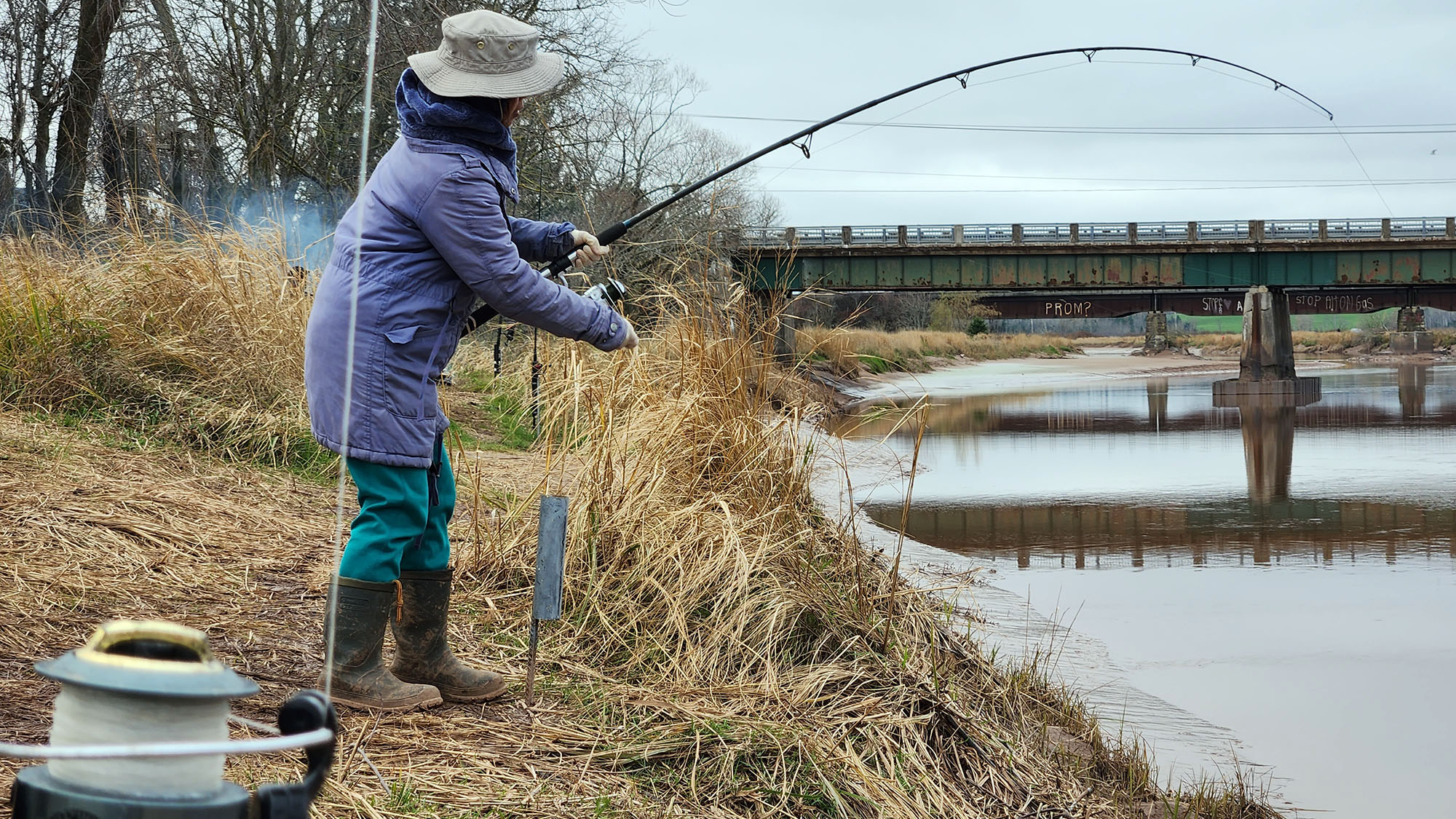
caption
An angler on the Shubenacadie River gets a bite after a long afternoon of fishing on Sunday.Autumn run of striped bass has made the Shubenacadie River a prime destination for anglers
In early November, lines of fishing poles were visible from Highway 102, between Stewiacke and Milford, along the banks of the Shubenacadie River.
“This is where the fish are,” said Ricky Hicks. “This is where the run goes. This is where the people are.”
Tourists gather for a few minutes to watch the record tides surge into the Bay of Fundy. The anglers arrive when the tides carry schools of fish into the Shubenacadie River system.
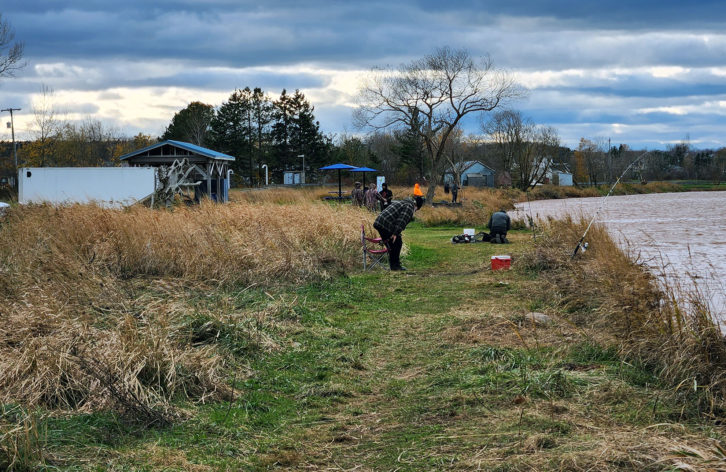
caption
The striped bass angling community gathers on the Shubenacadie River in November.It’s a cold Tuesday. Dozens of people are shivering along the shore at the Shubie River Park, 30 kilometres from the mouth of the Bay. Anglers are watching the tips of their fishing rods snap with the wind, waiting for a bite. Firepits line the beach, for the hardcore anglers who bundle up against the Maritime wind for the chance to catch a trophy fish.
“It’s supposed to drop to minus 3 tonight,” Bruno Tessier said. He travels to Nova Scotia every year from Plessisville, Que., for the chance to hook one species of fish in particular.
“When you get the fever, there’s no cure,” said Tessier.
Tessier has been migrating with schools of striped bass for 11 years. He chases them down the St. Lawrence, into the tidal waters of eastern Canada and the United States. He stops in Shubenacadie, beside an overgrown ballfield, where Hicks sets up shop for the runs of striped bass that peak throughout the season.
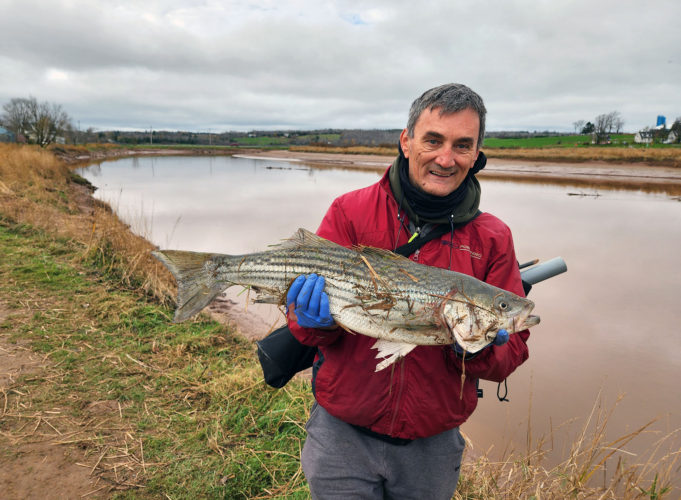
caption
A proud angler shows off his catch, a 79-centimetre keeper striped bass.“The striped bass fishing is world class,” Hicks said. “It’s fishing that nobody has.”
Hicks has been fishing the Bay of Fundy his whole life. Five years ago, he turned his passion into a business. He wanted to show his son how to make a simple living.
Hicks owns and operates Bender Over mobile bait shop. His home base is in Amherst, but he tows a trailer filled with tackle around the Maritimes and parks it where the fishing is best. His office has been in Shubenacadie since late October.
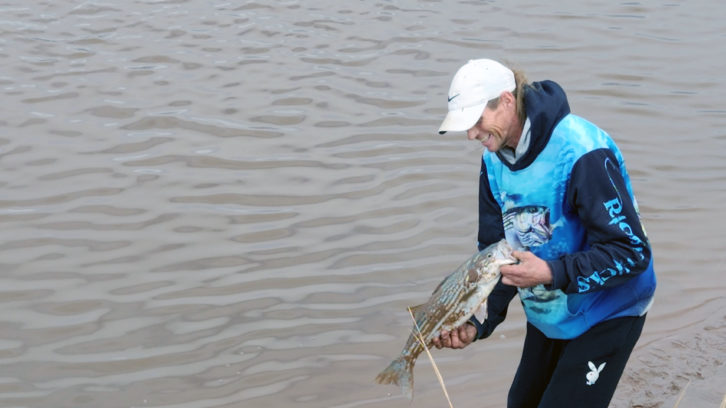
caption
Ricky Hicks returns an undersized fish to the river.People come to Hicks for mackerel, herring or squid to bait their hooks. They follow his trailer on the social media groups devoted to local striped bass fishing. Word spreads and the community follows. They expect to find fish where Hicks does business.
“It’s a great atmosphere,” Shirlene Dancause said. She’s been fishing on the Shubenacadie River for five years. She comes for the thrill of catching stripers but finds serenity between casts.
“Everybody here is happy,” Dancause said. “Everybody loves fishing. It’s relaxing.”
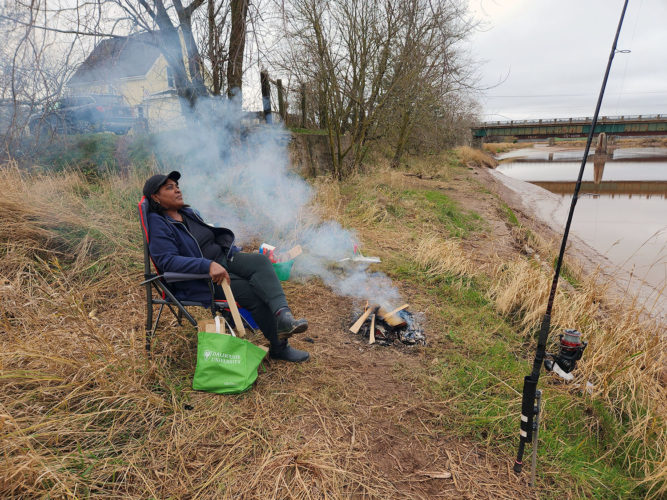
caption
Shirlene Dancause watches her fishing rod for a bite.“It’s the best therapy you can get,” said Mike McKay. He runs the bait shop when Hicks is working elsewhere. He pulls long hours, camped out overnight, but smiles when he talks about his job.
“At least I’m fishing,” McKay said. “Nothing else matters when you’re on this bank.”
To keep a striped bass caught in the Maritimes Region, including the Bay of Fundy, it must be a minimum of 68 centimetres long. Anglers must release fish caught beneath the limit.
The increased popularity of striped bass fishing started when more people started posting their trophies on social media. Everyone is vying for membership in the 40 club – for people who’ve landed a striped bass over 40 inches, or 101 centimetres.
“About 10 years ago. That’s when I noticed the number of people and the sizes of fish going up,” McKay said. He’s been fishing striped bass for 25 years. He said something changed in the last decade.
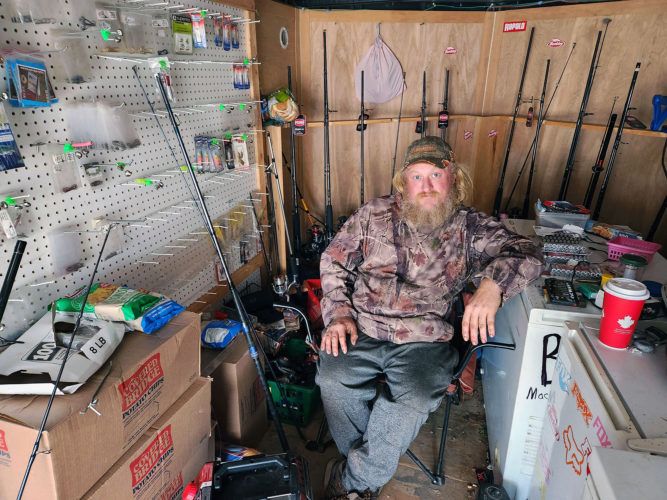
caption
Mike McKay works at Bender Over bait shop.“I went five years without catching a keeper,” McKay said. “Now I catch 35’s. Up to 44’s.”
The Nova Scotia Striped Bass Facebook group has more than 17,700 members. With so much interest in striped bass, there is concern about the impact of so much fishing. The Committee on the Status or Endangered Wildlife in Canada (COSEWIC) considers striped bass populations on the Bay of Fundy to be at risk.
Prof. Trevor Avery is a biologist, mathematician, and statistician at Acadia University. He runs the Striped Bass Research Group, a team of academics whose “goal is to collect information currently unknown about striped bass for the betterment of the species,” according to their webpage. Research students at Acadia university collaborate with NGOs, governments, First Nations, other academics, and members of the community to complete the group’s projects.
Avery said there is reason to believe striped bass populations are recovering.
“Citizen science is an important piece of the puzzle,” Avery said. “We can learn a lot from our local knowledge, our traditional knowledge, that sort of thing.”
Nova Scotia does not require a licence to fish the tidal waters of the Bay of Fundy at any time of year, but there are regional bag limits and size restrictions.
Avery does not advocate for a more restricted tidal fishery, but he thinks the government could do more to monitor bass populations.
“That’s what I’ve been trying to do for 14 years,” Avery said. In addition to research projects, their main methods for collecting data are tagging at-risk fish species and collecting size and tissue samples.
“If you look at it anecdotally, it’s a growing fishery,” Avery said. “The natural fluctuations in striped bass populations have a very long periodicity because they are a long-lived species and certain spawning events tend to be better than others.”
Avery hesitates to attribute the abundance of striped bass to climate change because the population remains local. He says genetic analysis shows U.S. fish migrating north account for less than one per cent of local populations. He maintains that the impact of increased fishing is small.
“Back in the 80s, the population was on one of these apparent upswings,” Avery said. “One of the comments I heard was, ‘This fishery isn’t even fun because every time you cast you get a fish. I don’t think this is new. I think this is cyclical and people only have a baseline of memory that goes back a generation.”
Hicks wonders if the increased popularity might be nothing more than a social media phenomenon.
“You see more 40’s because people are flashing them on Facebook,” he said. Anglers covet big fish for their fillets, but Hicks said it’s also about bragging rights.
As long as anglers need bait, they’ll find Hicks and his staff, camped out, at any temperature or time, helping people catch trophy fish.
“This is my passion,” Hicks said. “This is what I do.”
About the author
Jeremy Hull
Jeremy Hull works for CBC. He's published in magazines throughout the Maritimes. He's happiest when writing about jiu-jitsu or fly fishing. Jeremy...

A
Anthony McPherson
P
Peter Grandy